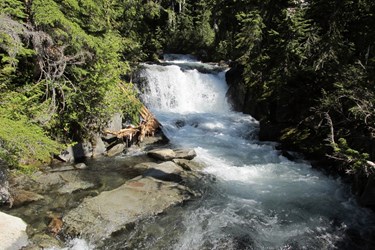Study Links Plastic Pollution To Wastewater Treatment Plants
A new study from researchers at Loyola University has found a strong link between wastewater treatment and plastic pollution in rivers.
The research was presented by Timothy Hoellein, an ecologist at the university, at conference in February. The study was groundbreaking in part because it focused on rivers.
“While rivers are considered a major source of microplastic to oceans, little is known about microplastic abundance, transport, and biological interactions in rivers,” the presentation said.
"Rivers have less water in them than oceans, and we rely on that water much more intensely," Hoellein said in a statement.
The study looked to measure three things: “First, the role of WWTPs on microplastic abundance in 10 rivers. Second, microplastic concentrations in WWTP influent, sludge, and effluent, and third, deposition rates of microplastic downstream of a WWTP point source.”
The findings?
“Although maximum concentrations varied among 10 sites, microplastic concentration was significantly higher downstream of WWTPs than upstream,” the presentation said. “WWTPs retained a significant component of microplastic in two activated sludge plants (>90%). Microplastic deposition length in an urban river was >2 km, and concentrations were orders of magnitude higher in the sediment than water column. Finally, bacterial communities were distinct on microplastic in water column and sediment habitats, yet communities became more similar with increasing distance from WWTP effluent sites.
The upshot is that these data support “the role of rivers as sources of microplastic to downstream ecosystems, but also illustrate that rivers are active sites of microplastic retention and bacterial colonization.”
Hollein weighed in: "Wastewater treatment plants do a great job of doing what they are designed to do — which is treat waste for major pathogens and remove excess chemicals like carbon and nitrogen from the water that is released back into the river," Hoellein said. "But they weren't designed to filter out these tiny particles."
Pollution in rivers is a problem for both humans and wildlife. “Research suggests that when fish and other organisms eat the bite-sized particles, the plastic and associated toxins can be passed up the food chain to other animals and people,” Inside Science reported.
For similar stories, visit Water Online’s Source Water Contamination Solutions Center.
Image credit: "River Whale," © 2011 archer10 (Dennis), used under an Attribution 2.0 Generic license: http://creativecommons.org/licenses/by/2.0/deed.en

